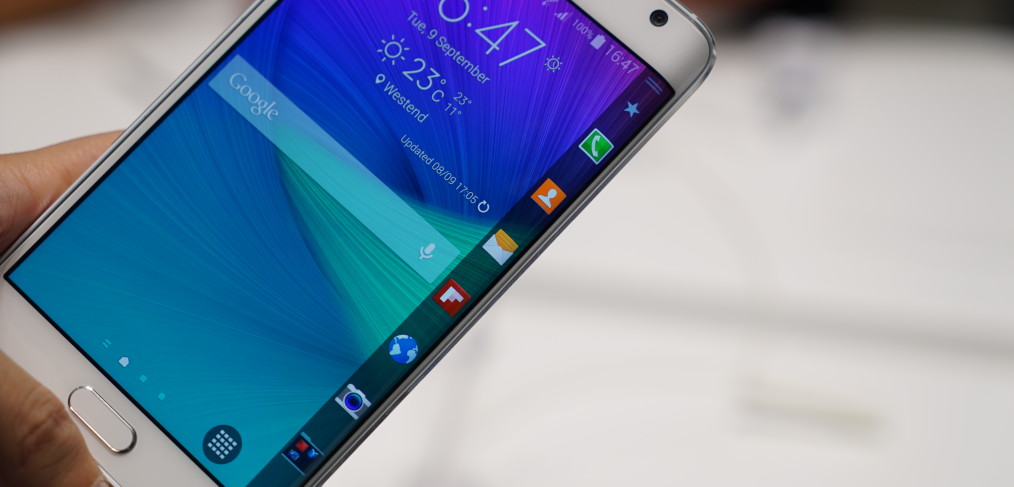
Galaxy’s Last Stand
Back in the early days of Apple, Steve Jobs often found himself on site visits at Sony’s headquarters in Japan. Jobs was fascinated with everything Sony and often took inspiration from the Japanese-tech giant, says journalist Nobuyuki Hayashi whose closely covered Sony for several decades.
Hayashi tells me, even Jobs’ now trademark black turtleneck, jeans, and sneakers are said to have been inspired by Sony’s assembly-line uniform.
At the pinnacle of its success, Sony was in many ways the inspiration for up and comer Apple.
Ironically, and sadly, decades later, it’s Apple that’s at the top of its game, while Sony struggles with profitability. Just last week, the company behind such masterpieces as the Walkman and the Trinitron TV, announced plans to spin off parts of its business in order to end years of financial woes – woes caused partly by the company’s inability to adapt new technologies into existing hit products.
There’s a valuable lesson here – in the fast paced, and ever changing world of technology, leaders need to fight hard to remain on the bleeding edge of innovation, or they risk dying by the wayside.
Most recently it’s become a predicament shared by industry giant Samsung.
In May 2012, the Korean-tech company struck gold when it unveiled the Galaxy S3 smartphone. Powerful, super thin, and with a large display (large by that year’s standards) – the S3 was dubbed the “iPhone killer” and quickly catapulted Samsung into a much coveted spot as the world’s largest smartphone maker.
But with weak defenses and an unclear game plan it didn’t hold on to that title for very long, Apple took back the crown at the end of 2014.
I hate to say it, but Samsung had it coming. The successor to the S3 – the Galaxy S4 was merely an incremental update, not an innovative leap forward – and the Galaxy S5 after that, while technically superior, was not the premium phone that users had clamored for.
This time last year, in anticipation of the S5, I wrote, “If Samsung retains its 3-year-old rounded corner, plasticky design, not even the best specs can save it.” And that’s exactly what happened. Samsung’s plastic DNA lived on, in fact the S5 sported the most horrendous chrome-plated, plastic bezel that felt several steps backward. Consumers responded, buying 40% less S5s than Samsung hoped it would sell, reports the Wall Street Journal.
Last September, Samsung finally released the premium looking phones its users had begged for – in the form of iPhone 6 rivals the Galaxy Alpha and Galaxy Note 4 – but it was 7 months too late, the iPhone was back on top.
Thankfully, for Samsung, performing below expectations still translates to billions of dollars in profit, so much so that they can afford a second chance, and so we wait, with bated breath, for the unveiling of the Galaxy S6. The date and time have been set, March 1, 2015 in Barcelona – a day before the opening of Mobile World Congress.
I look back at 2014 and all its smartphones, then I look at the Galaxy S5, and don’t think it necessarily deserves to be written off as a bad phone. On the contrary is was still one of the better smartphones of last year, but it was also a snooze fest, and for a company that had has so much success in the mobile phone space, expectations were immense. Unfortunately for Samsung, not meeting the high expectations meant disastrous disappointment.
The problem is/was, the success of the S3 wasn’t a result of meticulous planning and strategy, it was more like accidentally digging up hidden treasure. Samsung’s formula has oftentimes been to flood the market with products, aiming blindly, hoping for a bulls-eye. For a juggernaut with the resources of Samsung, hitting the target is an inevitability. Once that happens – Samsung does what it does best, iterate. But if the S5 and to a certain degree the S4 has taught them anything, iteration alone isn’t going to guarantee continued success.
Thankfully it appears they’ve learned their lesson. Inside Samsung, the S6 is referred to as Project Zero. It’s a big departure from the company’s usual alphabet-based naming convention (the S4 was called “J”, the S5 “K”), but more importantly is symbolic of the grand task at hand – starting with a blank slate, and designing a new phone from the ground up.
It’s an exercise that requires humility and endurance, a long and painful lap, swam against the current of the company’s own DNA. But from the looks of it, these sacrifices may soon pay off.
Based on what sources have told me, what has been reported online, and what has been teased, it looks like the Galaxy S6 will come in two variants – the flagship S6 and the S6 Edge.
Both phones will sport 5.1-inch Quad HD displays (with 4x the resolution HD) but the S6 Edge will have 2 secondary screens that flank its main display, both slanting downward in 45 degree angles. These secondary displays can be used to display notifications in a ticker-like format and/or run apps that don’t need as much screen real estate.
Samsung is also casting its bets on an entirely different design language. The standard S6 will look like a fusion between a Samsung Galaxy smartphone and the iPhone 6 with a rounded metal frame with cutouts for antenna breaks and laser etched grills. The S6 is said to feature glass on both its front and back while the S6 Edge may have a metal back plate. In exchange for this more premium, unibody design, for the first time ever, the next Galaxy S smartphone won’t have a removable battery.
But that shouldn’t be a problem, Samsung is teasing new wireless charging capabilities and faster charging times. It has also hinted at even better camera technology that will allow you to “find clarity in darkness.” Expect Samsung to improve not only the S6’s main camera but also its front facing camera with an emphasis at wide angle selfies.
In a recent teaser video, Samsung also promised overall performance improvements saying, “The faster I am the more that gets done, and the more time I can give to others. I am the next Galaxy.” The device will most likely be powered only by Samsung’s Exynos 7 Octa processor (without a Qualcomm Snapdragon 810 variant) and will run on a less in-your-face version of Samsung’s Android customization called TouchWiz.
Usually in battle terms – a last stand is a tactical call made as a last resort when the odds are overwhelmingly against the defending party’s favor.
That immediately doesn’t seem to be the case with Samsung, because regardless of outcome, future Galaxy smartphones are expected. However, the enemy already charges forward, ready or not, what Samsung does next, is a make or break moment for its mobile phone business.
Following last year’s poor showing and increasing competition from dominant Apple, a resurgent Microsoft, and a highly competitive field of Android players, Samsung would be wise to stand its ground, throw caution to the wind and put up a brave fight.
Like tech greats that have come before, it needs to forge ahead in both realms of design and technical innovation if it wants to be seen as more than a one-hit wonder.
The beauty of a last stand comes with the drama of an underdog mustering whatever resources are left to put up the best fight possible. While this premise makes the prospect of winning the battle even sweeter, victory is also guaranteed in defeat – for it is the manner in which a battle is fought, that reverberates into the future.
A lot is riding on the Galaxy’s Last Stand – the company’s profitability, regaining leadership in the smartphone space, but more than that, is a cementing of status, a permanent spot amongst the tech greats, earning reverence, and seeding inspiration that fuels the Sonys, Apples, and Samsungs of tomorrow.
